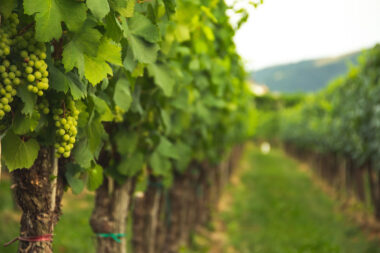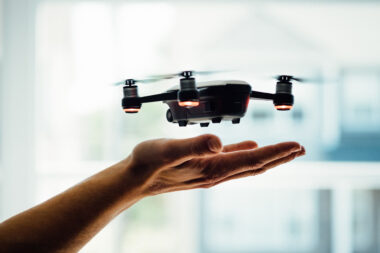Introduction
Unmanned Aerial Vehicles, commonly known as drones, are aerial platforms that operate without a human pilot onboard. Ranging from micro-scale quadcopters to long-endurance fixed-wing aircraft, UAVs are designed to perform a wide array of military operations, including ISR (Intelligence, Surveillance, Reconnaissance), target acquisition, electronic warfare, and precision strikes. With rapid progress in sensor miniaturization, AI integration, and secure communications, UAVs now serve as force multipliers in modern warfare.
Architectural Design of Unmanned Aerial Vehicles (UAVs)
The architectural design of UAVs is a multi-layered system integrating aerodynamics, embedded electronics, autonomous control algorithms, communication interfaces, and payload subsystems. The design is modular to ensure mission adaptability, maintenance ease, and scalability.
1.Airframe Architecture
1.1 Structural Design
- Materials: Carbon fiber composites, aircraft-grade aluminum, and high-density foam for lightweight yet durable structures.
- Configuration Types:
- Fixed-Wing: High endurance and glide efficiency (e.g., ISR UAVs).
- Rotary-Wing: VTOL capability for urban or confined operations.
- Hybrid: Combines VTOL with fixed-wing efficiency.
1.2 Frame Modules
- Fuselage: Houses batteries, avionics, and payload.
- Wing or Rotor Assembly: Provides lift.
- Empennage: Tail control surfaces for pitch/yaw (in fixed-wing UAVs).
- Landing Gear: Fixed, retractable, or skid-type depending on terrain.
2. Propulsion and Power Architecture
2.1 Propulsion System
- Motors:
- Brushless DC (BLDC) motors (rotary UAVs)
- Internal combustion engines (long-range UAVs)
- ESCs (Electronic Speed Controllers): Interface between flight controller and motors to regulate speed.
2.2 Power Supply
- Battery Types: Li-Po or Li-ion packs for high energy density.
- Energy Management System (EMS): Monitors battery voltage, current, and temperature.
- Optional Sources: Hydrogen fuel cells or solar panels (endurance UAVs).
3. Onboard Avionics and Embedded Systems
3.1 Flight Control Unit (FCU)
- Microcontroller/SoC Platforms: STM32, ARM Cortex-M7, or FPGA for real-time control.
- Functions:
- Sensor data fusion
- Attitude and position control
- Stability augmentation
- Redundancy fail-safes
3.2 Navigation and Orientation
- IMU (Inertial Measurement Unit): Combines accelerometers, gyroscopes, and magnetometers.
- GNSS (GPS/GLONASS/Galileo): Global position tracking.
- RTK Modules: Centimeter-level accuracy for autonomous landings.
3.3 Sensor Integration Bus
- Communication via I2C, SPI, UART, CAN Bus for modular plug-and-play sensors:
- Barometric pressure sensors (altitude)
- LIDAR or sonar (altitude/obstacle detection)
- Optical flow sensors (velocity estimation)
- Vision sensors (SLAM, object tracking)
4. Communication Architecture
4.1 Internal Communication
- Sensor-Control Integration: CAN bus, SPI, and I2C protocols.
- Redundant control channels for fail-safe switching and health checks.
4.2 External Communication
- Data Link:
- Short Range: 2.4 GHz/5.8 GHz RF (manual or semi-autonomous modes)
- Long Range: SATCOM via L-band or Ku-band
- Control Link Encryption: AES-256 or ECC protocols.
- Telemetry and Video Downlink: Real-time feedback to GCS or operator.
5. Software Architecture
5.1 Operating Framework
- RTOS (Real-Time Operating Systems): FreeRTOS, ChibiOS, or NuttX for hard real-time task scheduling.
- Middleware: MAVLink (Micro Air Vehicle Link) for GCS-UAV communication.
5.2 Control Algorithms
- Stability Control: PID/MPC for roll, pitch, and yaw.
- Waypoint Navigation: Path planning using A* or RRT algorithms.
- Obstacle Avoidance: Sensor fusion + reactive control using artificial potential fields.
5.3 AI and ML Integration
- Edge AI modules (Jetson Nano, Coral TPU) for onboard:
- Object detection using CNNs
- Pattern recognition (thermal, radar, or visual)
- Target tracking using Kalman Filters + Deep Learning
6. Payload and Mission Systems
6.1 ISR Payloads
- EO/IR Cameras, SAR, LIDAR
- Multi-gimbal stabilization platforms
- AI-based image enhancement and compression
6.2 Combat Payloads
- Miniature precision-guided munitions (PGMs)
- Electronic jamming modules
- Directed RF or microwave payloads (for EW)
7. Ground Control Station (GCS) Architecture
- Mission Planning Software: Open-source or proprietary GUI with map overlay.
- Telemetry Processing Unit: Decodes MAVLink or custom protocols.
- Operator Interface: Joysticks, haptic gloves, or command tablets.
- Backup RF/4G/5G modules for BLOS (Beyond Line of Sight) control.
8. Security and Safety Layers
- Failsafe Hierarchy:
- Geo-fencing
- RTL (Return to Launch) on loss of signal
- Auto-landing routines on power drop
- Redundancy Architecture:
- Dual GPS, dual FCU, and dual ESCs
- Flight Logging and Blackbox:
- Real-time logging on EEPROM or SD card
- Forensics data capture on crash or failure
Working Principle of UAV Systems and the Science Behind It
Unmanned Aerial Vehicles (UAVs), commonly referred to as drones, operate based on the interplay of aerodynamics, control systems, sensor fusion, and communication networks. The working of a UAV is governed by principles of flight mechanics, electromechanical actuation, and real-time feedback control, enabling autonomous or semi-autonomous operations across civilian, industrial, and defense domains.
1. Fundamentals of Flight Mechanics
At the core of UAV operation lies the science of aerodynamics, which determines how the UAV generates lift, thrust, and maintains stability.
1.1 Lift and Thrust Generation
- Lift is produced when air flows over the UAV’s wings or rotor blades, governed by Bernoulli’s Principle and Newton’s Third Law.
- Thrust is generated by:
- Fixed-wing UAVs: Propellers driven by electric motors or combustion engines.
- Rotary-wing UAVs (Quadcopters/VTOLs): Multiple rotors spinning to generate vertical lift and directional control.
1.2 Stability and Control
- Controlled using Euler angles (pitch, roll, yaw) derived from gyroscopic sensors.
- Movements:
- Roll: Rotating left or right by varying rotor speeds (in quadcopters).
- Pitch: Tilting forward or backward.
- Yaw: Rotational motion around the vertical axis for turning.
2. Embedded Control System Operation
UAVs use a closed-loop control system to regulate flight dynamics, implemented through embedded microcontrollers.
2.1 Sensor Fusion and State Estimation
- IMU (Inertial Measurement Unit) collects data from:
- Gyroscopes (angular velocity),
- Accelerometers (linear acceleration),
- Magnetometers (directional heading).
- Sensor fusion algorithms (e.g., Extended Kalman Filter) estimate the UAV’s real-time position, velocity, and orientation.
2.2 Control Loops
- PID Control (Proportional-Integral-Derivative) algorithms maintain stable flight by continuously adjusting motor speeds based on:
- Setpoint (desired attitude)
- Feedback (actual attitude from IMU)
- Error (difference between setpoint and feedback)
2.3 Navigation and Path Planning
- GNSS/GPS systems provide global positioning data.
- Barometers and ultrasonic sensors help maintain altitude.
- Computer vision or LIDAR enables obstacle detection and terrain mapping.
3. Communication and Command Systems
UAVs communicate with Ground Control Stations (GCS) using various radio frequency (RF) technologies.
3.1 Telemetry and Control Channels
- Control Link: Sends operator commands to the UAV (via 2.4 GHz or LTE/5G).
- Telemetry Link: Sends UAV’s status back to the GCS (altitude, battery, GPS position).
- Data Link: Transfers high-bandwidth data such as video feeds or sensor outputs.
3.2 Autonomy vs Manual Control
- UAVs can operate:
- Fully autonomous (pre-programmed missions)
- Semi-autonomous (auto-stabilized but operator-controlled navigation)
- Manual (full human control with pilot input)
4. Payload and Mission Execution
UAVs are equipped with mission-specific payloads that collect, transmit, or act upon data.
Examples:
- EO/IR cameras for surveillance
- Multispectral sensors for agriculture
- Laser rangefinders for distance measurement
- Radars for mapping or tracking
- Spraying mechanisms for crop health or disinfection
5. Scientific Principles Involved
| Principle | Description | Application in UAV |
|---|---|---|
| Bernoulli’s Principle | Faster air over curved surfaces creates lower pressure | Lift generation on airfoils |
| Newton’s Third Law | Every action has an equal and opposite reaction | Rotor thrust in quadcopters |
| PID Control Theory | Error-based control for dynamic systems | Attitude stabilization |
| Sensor Fusion | Combining multiple noisy sensor inputs | Accurate state estimation |
| Kinematics and Dynamics | Motion prediction using rigid-body physics | Navigation and trajectory planning |
| Electromagnetism | Principles of wireless communication and motor control | RC control, ESC operation |
| Machine Learning | Adaptive control and pattern recognition | AI-based decision making, image analysis |
Techniques and Technologies Involved in UAV Systems
The effectiveness and functionality of UAVs rely on a diverse set of technologies spanning aeronautics, electronics, control theory, communication, computer vision, and AI. These elements are integrated through precise engineering workflows to ensure autonomous or remote-controlled operation in a variety of environments.
1. Aerodynamic Design and Structural Materials
Techniques:
- Computational Fluid Dynamics (CFD): Simulates airflow over airframe and rotor surfaces to optimize lift, drag, and stability.
- Finite Element Analysis (FEA): Models structural stress and vibration in wings, fuselage, and rotors.
Technologies & Materials:
- Carbon Fiber Composites: Lightweight and high-strength material for frames and wings.
- EPO/ABS Plastics: Used in small-scale and hobby UAVs.
- 3D Printing (FDM/SLA): Rapid prototyping of UAV airframes, housings, and rotor mounts.
2. Propulsion and Power Systems
Techniques:
- Thrust-to-weight Ratio Optimization: Ensures sufficient lift for vertical take-off or endurance.
- Motor-Power Matching: Selection of motor–propeller combinations for efficiency at target flight speeds.
Technologies:
- Brushless DC Motors (BLDC): Efficient and responsive, controlled by ESCs (Electronic Speed Controllers).
- Lithium Polymer (Li-Po) Batteries: High energy density; provides lightweight power storage.
- Fuel Cells/Hybrid Engines: For long-range or heavy-payload UAVs in military/industrial use.
3. Embedded Control Systems and Algorithms
Techniques:
- PID (Proportional–Integral–Derivative) Control: Core control loop for flight stability.
- Sensor Fusion Algorithms: Kalman Filter, Extended Kalman Filter (EKF), Complementary Filter for combining IMU/GPS/Barometer inputs.
- Model Predictive Control (MPC): Advanced control strategy using UAV model to anticipate future system states.
Microcontroller Platforms:
- STM32F4/F7 series for real-time control.
- Pixhawk, BeagleBone Blue, Arduino Mega, ESP32, etc., used in varying UAV classes.
Flight Control Software:
- PX4 Autopilot, ArduPilot, or custom RTOS firmware.
4. Navigation, Guidance, and Positioning
Techniques:
- Waypoint Navigation: Using pre-programmed GPS coordinates.
- Visual Odometry: Determines UAV movement using optical flow from onboard cameras.
- SLAM (Simultaneous Localization and Mapping): Builds a map of the environment while tracking location (e.g., EKF + LiDAR).
Technologies:
- GPS/GLONASS/BeiDou Modules: For outdoor position tracking.
- Barometric Pressure Sensors (BMP388, MS5611): Used for precise altitude control.
- Inertial Measurement Units (IMUs): MPU6050, BNO055, MPU9250 — provide acceleration and angular rate.
- LIDAR (e.g., Lightware SF11-C), Optical Flow Cameras, Ultrasonic Sensors (HC-SR04): Used in indoor or GPS-denied environments.
5. Communication Systems and Data Links
Techniques:
- Frequency-Hopping Spread Spectrum (FHSS): Avoids interference in control and telemetry links.
- Adaptive Bandwidth Control: Adjusts bitrate and transmission power for stable video/data communication.
Technologies:
- RF Modules: 2.4 GHz, 433 MHz, 900 MHz radios for command/control.
- Telemetry Radios: SiK radio, RFD900x for long-range data transmission.
- Video Transmission: 5.8 GHz analog FPV (First-Person View) or digital (HDZero, Wi-Fi based).
- Mesh Networking (802.11s, MANET): Used in swarm UAV coordination and battlefield communication.
6. Vision and Perception Systems
Techniques:
- Stereo Vision and Depth Estimation
- YOLOv5, SSD, or Faster R-CNN for real-time object detection
- Structure-from-Motion (SfM): Used in 3D reconstruction and terrain mapping.
Technologies:
- Cameras: CMOS cameras (Raspberry Pi Cam, FLIR thermal cams), Intel RealSense for depth perception.
- GPU/AI Edge Modules: NVIDIA Jetson Nano/Xavier, Google Coral TPU for onboard deep learning inference.
- OpenCV, ROS (Robot Operating System) for robotic perception pipelines.
7. Artificial Intelligence and Machine Learning
Techniques:
- Reinforcement Learning: Adaptive flight control in uncertain environments.
- Anomaly Detection: Identify faults in motors, sensors, or GPS drift using unsupervised learning.
- Path Planning Algorithms: A*, D*, RRT (Rapidly-exploring Random Tree), and Dijkstra’s Algorithm.
AI Platforms:
- TensorFlow Lite, PyTorch Mobile for onboard inference
- OpenAI Gym-based simulators for training RL agents
8. Ground Control Systems (GCS) and UI/UX
Technologies:
- Mission Planning Software: QGroundControl, Mission Planner
- Telemetry Dashboard UIs: Custom interfaces developed in Python (Dash, PyQt) or C++ (Qt).
- Mobile and Web Interfaces: Built with React Native, Flutter, or web dashboards using MQTT/WebSocket integration.
9. Cybersecurity and Fail-Safe Mechanisms
Techniques:
- Data Encryption (AES, TLS): Secures control and telemetry links.
- Redundancy Planning: Dual IMUs, GPS failover, watchdog timers.
- No-Fly Zones and Geofencing: Enforced via firmware programming.
Applications of UAVs in Defence
1. Intelligence, Surveillance, and Reconnaissance (ISR)
Use Case:
- Persistent monitoring of enemy movement, border regions, and strategic zones.
Technical Aspects:
- Sensor Payloads: Multi-spectral and hyperspectral cameras, synthetic aperture radar (SAR), IR/thermal imaging units.
- Onboard Processing: Real-time image processing using CNNs for object tracking and target recognition.
- Data Transmission: Encrypted high-bandwidth telemetry links for secure live streaming to command centers.
2. Tactical Combat and Strike Missions
Use Case:
- Precision-guided attacks, high-value target neutralization, and suppression of enemy air defenses (SEAD).
Technical Aspects:
- Target Locking Systems: AI-driven visual targeting via deep learning algorithms (e.g., YOLOv8, Fast R-CNN).
- Payload Integration: Modular weapon systems (missiles, guided bombs) with servo-actuated deployment.
- Flight Dynamics: Autonomous or semi-autonomous navigation with terrain-following and obstacle avoidance.
3. Electronic Warfare (EW) and Signal Intelligence (SIGINT)
Use Case:
- Interception and jamming of enemy communication systems.
Technical Aspects:
- EW Payloads: Directional antennas, signal analyzers, and SDR (Software-Defined Radio) modules.
- Algorithms: Spectrum analysis using FFT and signal classification via ML algorithms.
- Covert Operations: UAVs use low-RCS (Radar Cross Section) designs and silent propulsion systems for stealth.
4. Combat Support and Logistics
Use Case:
- Supplying ammunition, food, or medical kits to soldiers in forward-operating bases (FOBs) or conflict zones.
Technical Aspects:
- Payload Optimization: Adaptive flight control algorithms adjust for shifting center of mass and weight.
- Routing Algorithms: Dynamic re-routing using A*, Dijkstra, or reinforcement learning for GPS-denied environments.
- VTOL Systems: Vertical Take-Off and Landing UAVs navigate rugged terrain without runways.
5. Swarm Intelligence and Autonomous Coordination
Use Case:
- Dozens to hundreds of UAVs operate collaboratively for area surveillance, electronic decoys, or saturation attacks.
Technical Aspects:
- Swarm Algorithms: Decentralized consensus mechanisms (e.g., flocking, Boids model, particle swarm optimization).
- Communication: MIMO mesh networks or ad hoc MANET (Mobile Ad-hoc Network) with fault tolerance.
- AI Integration: Federated learning and shared inference across swarm nodes without central command.
6. Battlefield Damage Assessment and Post-strike Recon
Use Case:
- UAVs assess and confirm damage post-strike to evaluate mission success and minimize collateral damage.
Technical Aspects:
- Image Analytics: Post-processing using AI-enhanced SAR and infrared data.
- Automated Reporting: GIS-tagged visualization with AI-generated reports summarizing structural impact.
AI & Machine Learning in Defence UAVs
- Adaptive Control Systems: UAVs adjust to dynamic wind loads, signal jamming, or GPS spoofing in real-time.
- Predictive Maintenance: AI models predict component failure based on flight data logs.
- Emotion/Affiliation Detection: Experimental systems explore facial recognition + behavioral analysis to detect threats in urban zones.
Cybersecurity and Countermeasure Resilience
- Anti-Jamming Systems: Frequency hopping and adaptive beamforming protect command/control signals.
- Encryption Protocols: AES-256, TLS-based end-to-end communication to avoid eavesdropping.
- GPS Spoofing Countermeasures: Inertial navigation backup and AI-based anomaly detection for spatial inconsistency.
Advantages in Defence Context
| Capability | Conventional Systems | UAV-Based Systems |
|---|---|---|
| Risk to Personnel | High | Minimal or zero |
| Endurance | Limited by crew fatigue | 20+ hours of continuous operation |
| Deployment Speed | Slow logistics | Quick and mobile |
| Operational Altitude | Ground-based or manned air | Very low to very high altitude |
| Access in Hostile Environments | Limited | High (stealth, terrain-agnostic) |
| Cost per Mission | High | Significantly lower |
Conclusion
UAVs in defense are not merely force multipliers but essential components of next-generation military strategies. By integrating AI, advanced sensors, secure communication, and autonomous decision-making, UAVs enhance operational agility, precision, and survivability. As swarm intelligence, edge AI, and stealth technology evolve, the future battlefield will rely heavily on unmanned aerial capabilities for real-time superiority and strategic dominance.



